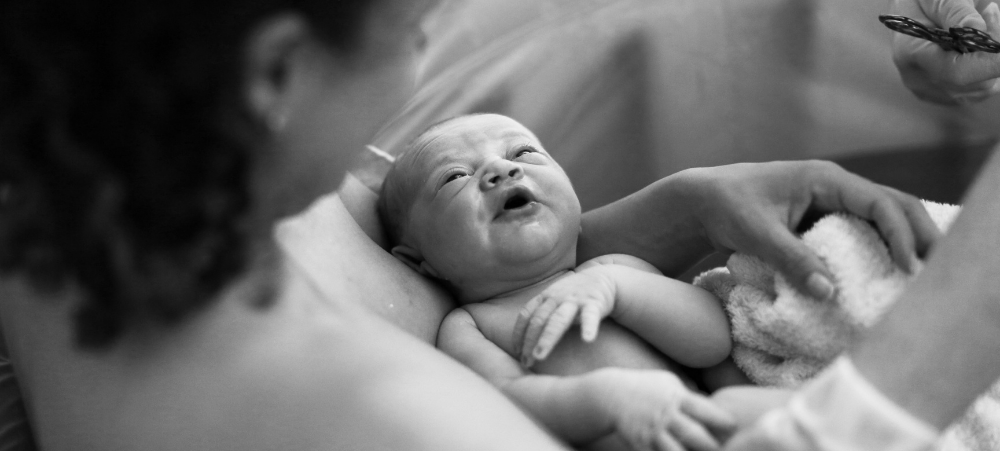Two thirds of moms would be more confident and comfortable breastfeeding in public if it was considered ‘normal’* Let’s support and empower parents to feed their baby anytime, anywhere. Breastfeeding has been around for as long as we have existed. We are also more aware than ever of the health benefits of it for baby and mom. And yet, in many parts of the world, there are still a lot of taboos around breastfeeding – signalling a need for more support for moms and dads to parent and feed their way. This World Breastfeeding Week (1 – 7 August), to understand some of the challenges breastfeeding parents face when feeding their babies, and support and empower them to parent and feed their way, Philips asked more than 6000 women across 25 countries* what holds them back from breastfeeding their babies anytime and anywhere they want to. Breastfeeding in public – still not considered ‘normal’ The results show there’s still work to be done to support and empower moms in their choice to breastfeed in public. Around two thirds (66%) of moms globally say they would feel more confident and comfortable breastfeeding in public if it was considered ‘normal’. Feeling embarrassed or uncomfortable to breastfeed around people they don’t know, is the key reason (52%) of women feel to hesitant to consider breastfeeding in public. The results also reveal many moms (40%) would not consider pumping in public, rising to 69% in France and dropping to 17% in the USA. The results vary across cultures and countries and breastfeeding and expressing in public is not something every mom wishes to do. At Philips, we recognise every breastfeeding journey is unique and personal to parent and baby; there is no right or wrong way. Parents may choose to feed their baby directly from mom’s breast, with expressed milk, or both, or between formula bottles. Some may choose to feed in public or in the comfort of their own home. Whatever their choice, Philips wants to empower and support all parents with solutions that support each of these choices. Moms should feel they have the ‘right’ Added to this, many moms say greater overall support from others would help them feel more comfortable breastfeeding in public, with this being true for almost a third of moms in the USA (33%), Spain and Mexico (both 30%). Meanwhile, greater partner support would help for many in Colombia (41%), Mexico and Chile (both 40%), compared to fewer in Austria (17%) and Germany (13%). These figures go a long way to indicate many moms would love to see society’s overall understanding and perception of breastfeeding shift from something inappropriate or unnecessary to one of the most natural, fundamental acts of care in the world. This shift can only happen by educating more people on the value of breastfeeding, starting more conversations about it and championing parents’ choices to feed however best suits them – something that lies in all of our hands. The results go on to reveal that while the biggest motivator for moms globally to breastfeed in public is being able to feed their babies as soon as they need it (59%), almost half (47%) globally say having the ‘right’ to breastfeed in public would also motivate them to do so, rising to 57% in Austria and Canada and dropping to 31% in South-Africa. Only through greater breastfeeding awareness, encouraging breastfeeding policy change, and creating more supportive communities around moms that empower them to feed their way, will more people start to recognise and promote breastfeeding as the basic human right it actually is. Moms deserve greater support Added to this, many moms say greater overall support from others would help them feel more comfortable breastfeeding in public, with this being true for almost a third of moms in the USA (33%), Spain and Mexico (both 30%). Meanwhile, greater partner support would help for many in Colombia (41%), Mexico and Chile (both 40%), compared to fewer in Austria (17%) and Germany (13%). These figures go a long way to indicate many moms would love to see society’s overall understanding and perception of breastfeeding shift from something inappropriate or unnecessary to one of the most natural, fundamental acts of care in the world. This shift can only happen by educating more people on the value of breastfeeding, starting more conversations about it and championing parents’ choices to feed however best suits them – something that lies in all of our hands. BreastStories: supporting and empowering parents Through our online platform, BreastStories, parents from around the world can share their breastfeeding stories, tips, and tricks via Instagram and Facebook, as well as find breastfeeding information and advice from healthcare professionals. By downloading the Philips Baby+ app on their mobile device, parents can also log feeding information, as well as track their baby’s development, such as their weight, height, and head circumference during the first year. Breastfeeding can be wonderful but it’s not always straightforward or easy for moms. Feeling comfortable is key to a positive breastfeeding experience as it makes it easier to release milk. Let’s unite in supporting parents to parent their way and empower them to feed their baby anytime, anywhere. We believe parents should feel supported and empowered throughout this journey, and parent their way. This includes feeding their baby and expressing milk whenever and wherever they need and want to – in restaurants and bars and in parks and on public transport. That’s why, during this World Breastfeeding Week, we are highlighting the conversation around breastfeeding by creating a supportive online community for moms and dads, so they never feel alone in their experiences. There’s great power in talking about your experiences with healthcare professionals, lactation consultants, at antenatal classes, via apps and online communities, and with family, friends, and other moms. Through our online platform, BreastStories, parents from around the world can share their breastfeeding stories, tips, and tricks via Instagram and Facebook, as well as find breastfeeding information and




































